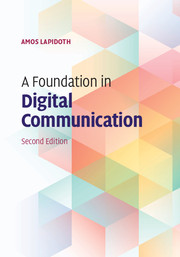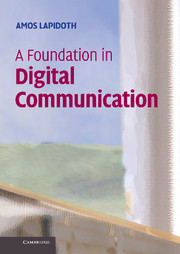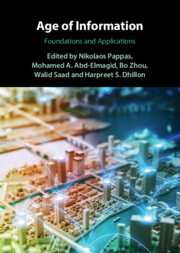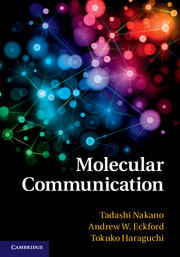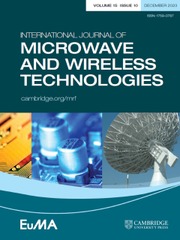A Foundation in Digital Communication
Written in the intuitive yet rigorous style that readers of A Foundation in Digital Communication have come to expect, this second edition includes entirely new chapters on the radar problem (with Lyapunov's theorem) and intersymbol interference channels, new discussion of the baseband representation of passband noise, and a simpler, more geometric derivation of the optimal receiver for the additive white Gaussian noise channel. Other key topics covered include the definition of the power spectral density of nonstationary stochastic processes, the geometry of the space of energy-limited signals, the isometry properties of the Fourier transform, and complex sampling. Including over 500 homework problems and all the necessary mathematical background, this is the ideal text for one- or two-semester graduate courses on digital communications and courses on stochastic processes and detection theory. Solutions to problems and video lectures are available online.
- Includes entirely new chapters on the radar problem and intersymbol interference channels, as well as a simpler, more geometric derivation of optimal detection in white Gaussian noise
- Contains over 150 new homework problems, with solutions for instructors available online
Product details
No date availableAdobe eBook Reader
9781316830000
0 pages
0kg
Table of Contents
- 1. Some essential notation
- 2. Signals, integrals, and sets of measure zero
- 3. The inner product
- 4. The space L2 of energy-limited signals
- 5. Convolutions and filters
- 6. The frequency response of filters and bandlimited signals
- 7. Passband signals and their representation
- 8. Complete orthonormal systems and the sampling theorem
- 9. Sampling real passband signals
- 10. Mapping bits to waveforms
- 11. Nyquist's criterion
- 12. Stochastic processes: definition
- 13. Stationary discrete-time stochastic processes
- 14. Energy and power in PAM
- 15. Operational power spectral density
- 16. Quadrature amplitude modulation
- 17. Complex random variables and processes
- 18. Energy, power, and PSD in QAM
- 19. The univariate Gaussian distribution
- 20. Binary hypothesis testing
- 21. Multi-hypothesis testing
- 22. Sufficient statistics
- 23. The multivariate Gaussian distribution
- 24. Complex Gaussians and circular symmetry
- 25. Continuous-time stochastic processes
- 26. Detection in white Gaussian noise
- 27. Noncoherent detection and nuisance parameters
- 28. Detecting PAM and QAM signals in white Gaussian noise
- 29. Linear binary block codes with antipodal signaling
- 30. The radar problem
- 31. A glimpse at discrete-time signal processing
- 32. Intersymbol interference.

